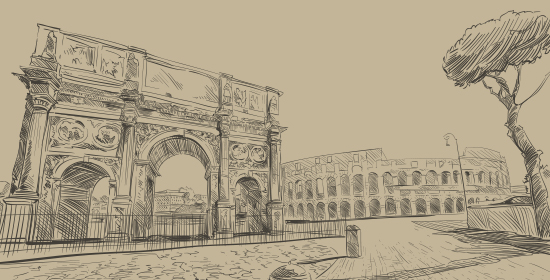Silent Sentinels: The Timeless Guardians of Tuscania's Landscape near Rome

Buongiorno and welcome to RomeCabs, Rome’s top-rated tour company for private tours in Italy, and Shore Excursions from Civitavecchia. Located in the heart of Italy, Tuscania proudly carries a history spanning over 2,500 years. Established by the Etruscans, this captivating town strategically rests on elevated terrain, just over 60 miles northwest of Rome. Tuscania's enduring allure is defined by its medieval walls, towers, and architectural masterpieces, each telling a tale of resilience and a profound legacy.
The timeless charm of Tuscania can be experienced on our private tours, including the Medieval Magic Countryside Tour, Mysterious Etruscans Day Tours from Rome, and Post-Cruise Medieval Magic tour from Civitavecchia.
Let’s embark on a journey into Tuscania's rich history and architectural marvels that define its medieval walls and towers. Beyond being architectural marvels, these formidable structures serve as custodians of enduring sagas, echoing tales of battles, sieges, triumphs, shifting fortunes amid sieges and political upheavals, and the unyielding spirit of a community that withstood the sands of time.
Our exploration ventures into the origins of Tuscania's defensive evolution from the ancient Etruscan era in the 8th century BC to the Medieval Era as we discover the timeless guardians of Tuscania's landscape, silent sentinels eternally etched in stone.
Timeless Guardians of Tuscania's Landscape near Rome
Guardians on High: Tuscania’s Defensive Mastery Through the Ages
Since ancient times of the Etruscans and Romans, towns were often strategically situated on elevated terrain and close to natural water sources. The Etruscans, who inhabited central Italy before the rise of Rome, were skilled in selecting locations that offered natural defensive advantages.
They often chose elevated sites, such as hills or ridges, as the foundations for their settlements. The elevated terrain itself acted as a natural barrier, making it more challenging for potential invaders to approach the town unnoticed. The steep inclines and natural obstacles provided an inherent layer of defense.
These elevated positions also provided better visibility over the surrounding landscape, allowing for early detection of approaching threats. The Romans, inheriting and adapting Etruscan strategies, continued the practice of situating towns on elevated terrain. This was not only for defensive purposes but also for strategic control of the surrounding territories.
Fortified walls, often encircling the entire town, further enhanced defensive capabilities. These walls typically incorporated defensive structures like watchtowers and gates. The combination of elevated positions with additional fortified walls made it harder for enemies to gain access.
Beyond defense, the strategic placement of towns allowed for better governance and control over trade routes, agricultural land, and transportation corridors. Elevated locations facilitated communication and provided a vantage point for overseeing the surrounding territories.
It's truly astonishing that these strategic considerations not only guided the establishment of Tuscania in ancient times but have maintained their enduring influence for over 2,500 years, shaping the very location we explore today.

Etruscan Origins of Defensive Walls in Tuscania
The origins of Tuscania's defensive strength can be traced back to the ancient Etruscan era, marked by the construction of its initial defensive wall to protect the growing settlement. In the vicinity of the Basilicas of San Pietro and Santa Maria Maggiore, remnants of these ancient fortifications, crafted from tufa blocks, still survive.
The Etruscan city walls, characterized by polygonal masonry, used large and irregular blocks of tuff, the indigenous rock abundant in this region.
Guardians of Time: Exploring Tuscania's Medieval Walls
Approach Tuscania today and the first testament to its storied past stands tall before you—the formidable defensive walls that have silently witnessed the ebb and flow of history, standing as stoic witnesses to a bygone era. Towering high and resolute, these walls with watch towers are not just awe-inspiring architectural marvels; they are guardians, a tangible reminder of the city's enduring struggle for stability and security.
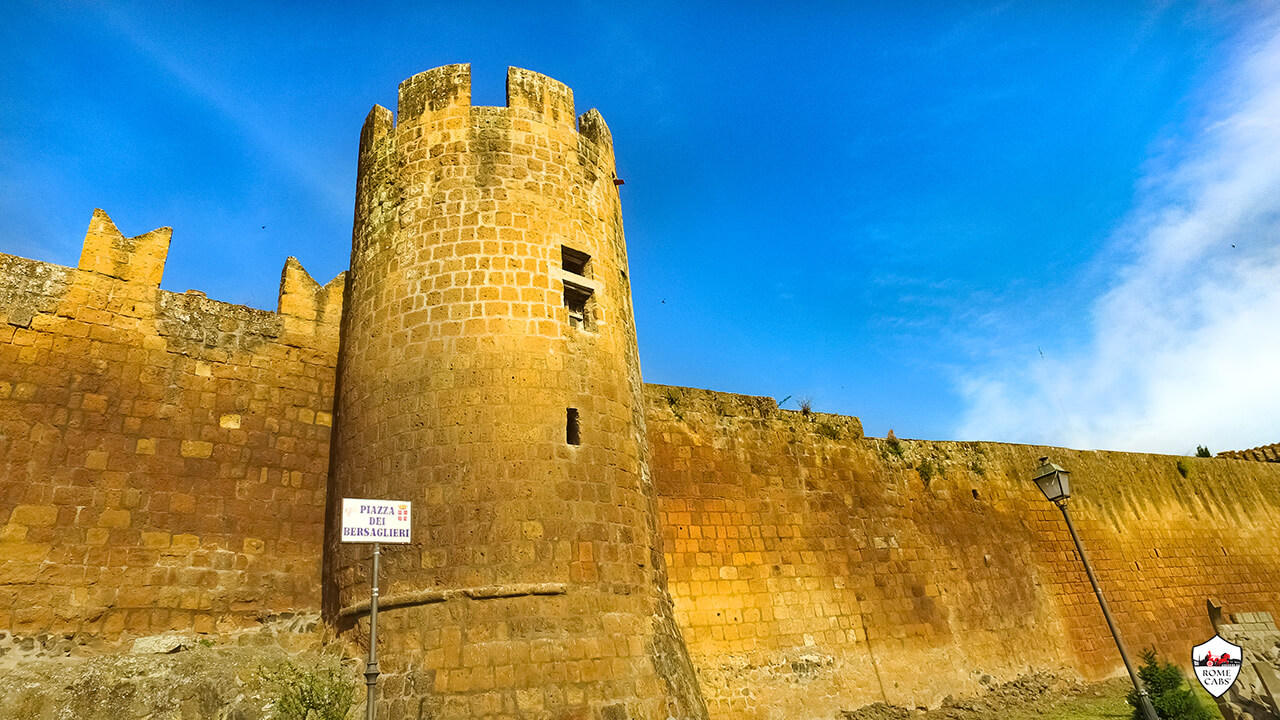
These stone curtain walls with integrated wall fortified were comprehensive defensive structures that integrated physical barriers, strategic elements, and community resilience to safeguard towns from external threats. They were a testament to the ingenuity of medieval military architecture and played a crucial role in the safety and security of medieval communities.
Constructed with purpose during the Middle Ages, these walls tell a tale of historical instability—of continuous conflicts, wars among city-states, foreign invasions, and the tumultuous disputes between the Pope and the Roman Emperor that characterized the precarious times of yore. However, defensive walls existed in Tuscania even before the Middle Ages.
The Middle Ages ushered in an era of continuous conflict and wars among different city-states. Tuscania, amidst this turbulent backdrop, fortified its boundaries with walls that stood as a resolute line of defense. Foreign invasions were a constant threat, and the squabbles between different city-states, and disputes between the Pope and the Roman Emperor added another layer of complexity to these precarious times.
Guardians of Stone: The Strategic Elements of Medieval Fortifications
The primary function of medieval walls was to create a physical barrier between the town and potential invaders. Walls were often made of stone or other durable materials, making them difficult to breach. The sheer presence of imposing walls acted as a deterrent to potential attackers. The sight of a well-fortified town often discouraged enemy forces from attempting an assault.
Walls had defensive features such as battlements, merlons, and crenels. Battlements provided cover for defenders, and crenels allowed archers to shoot arrows at attackers while remaining protected.
Watch Towers built along the walls served as observation points for guards. They provided an elevated vantage to spot approaching threats early, allowing for better preparation and defense.
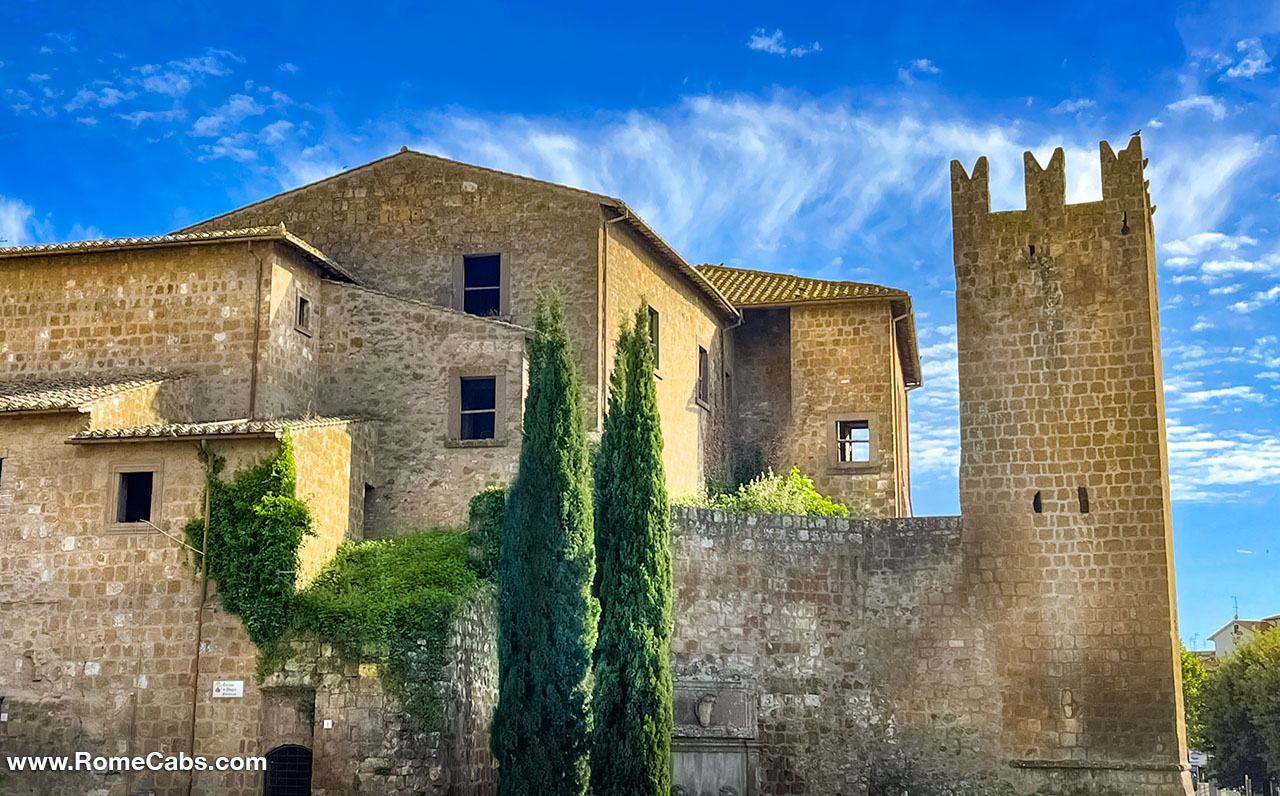
With a well-structured system of watchmen and alarms, towns could quickly mobilize their defenses in response to a potential threat, minimizing the element of surprise for attackers. In times of imminent danger, the townspeople could retreat behind the safety of the walls. Within the town walls, buildings were often constructed with defense in mind, providing a secure refuge.
Medieval walls were designed to withstand sieges, which were prolonged assaults on a town or castle. Strong walls, combined with adequate supplies within the town, allowed defenders to endure lengthy sieges until reinforcements could arrive or the attackers gave up.
Tuscania’s Intriguing Story of Ghibellines, Guelphs, and the Merlons
There’s a hidden secret built right into Tuscania’s medieval walls built right into the merlons. But first, let’s find out what these merlons are.
In medieval architecture, a "merlon" (singular form of "merlo" in Italian) refers to the solid upright section of a battlement, which is the defensive parapet that crowns the perimeter walls and defensive towers. Merlons are typically alternated with open spaces known as crenels or embrasures. The alternating pattern of merlons and crenels (the gaps) creates a distinctive serrated appearance along the top of the walls, providing protection for defenders during battles.
The merlons serve both passive and active defensive purposes. Passively, they cover defenders, offering protection from projectiles like arrows and stones aimed at the wall by attackers. Actively, defenders could use the crenels between merlons to launch arrows or other projectiles at attackers, while still being shielded from direct exposure.
The design and shape of merlons could vary, and the shape of the merlon on Tuscania’s walls is evident when you look at the top of the defensive walls. However, In this historical context, the merlons served as indicators of political affiliations during medieval conflicts, creating discernible differences between Guelph and Ghibelline.
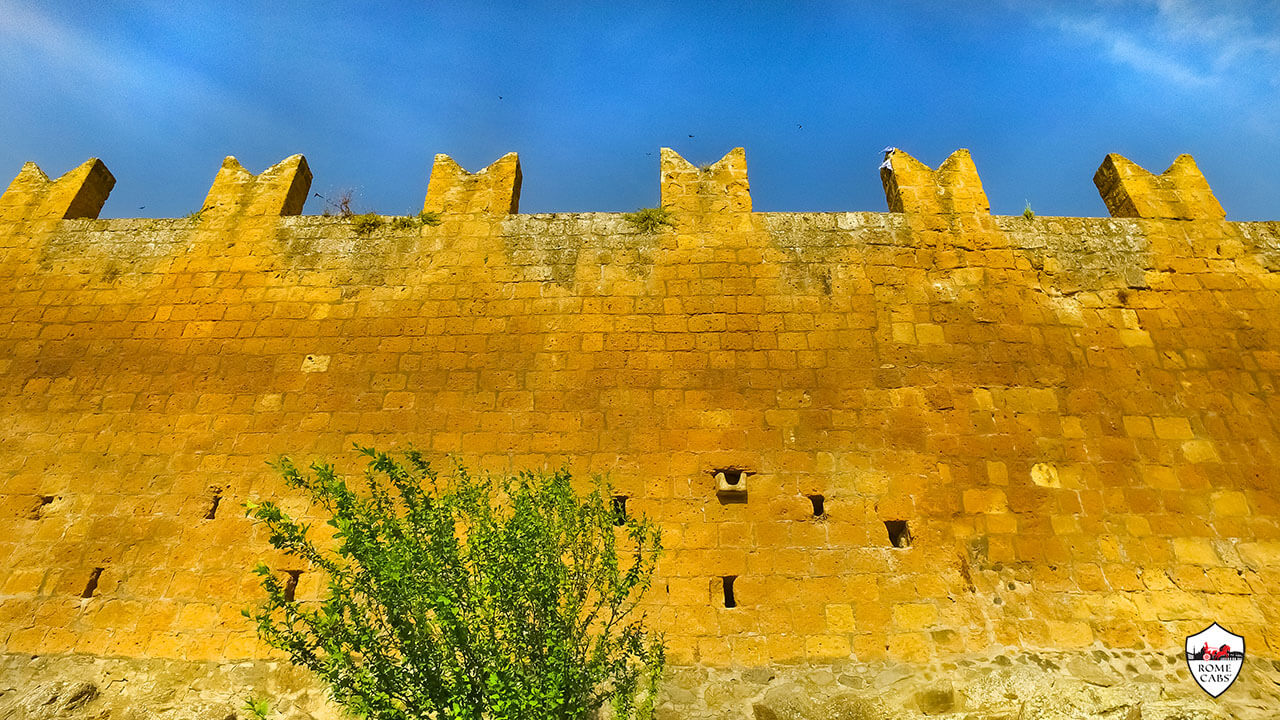
Tuscania's Medieval Turmoil: Ghibellines vs. Guelphs
In the 13th century, Tuscania was gripped by internal turmoil as the Ghibelline families, including the Cerasa and Albonetti, clashed with the Guelph families led by the Della Rocca. These distinctions often reflected the political affiliations during the struggles between the Papacy and the Holy Roman Empire.
The Ghibellines with merlons had a top that resembled a swallow's tail, championed the cause of the Roman Emperor, resisting Church and the Papacy interference in politics.
The Guelphs, with merlons typically had a square top reminiscent of Roman structures, stood in opposition in favor of the Pope favoring the Holy Roman Empire.
Amidst this discord, Tuscania witnessed the emergence of notable public monuments, exemplified by the construction of the Rivellino town hall favoring the Ghibelline voicing their support in stone for all to see in the shape of the merons that crown the town’s defensive walls - to their eventual demise as we are soon to discover!
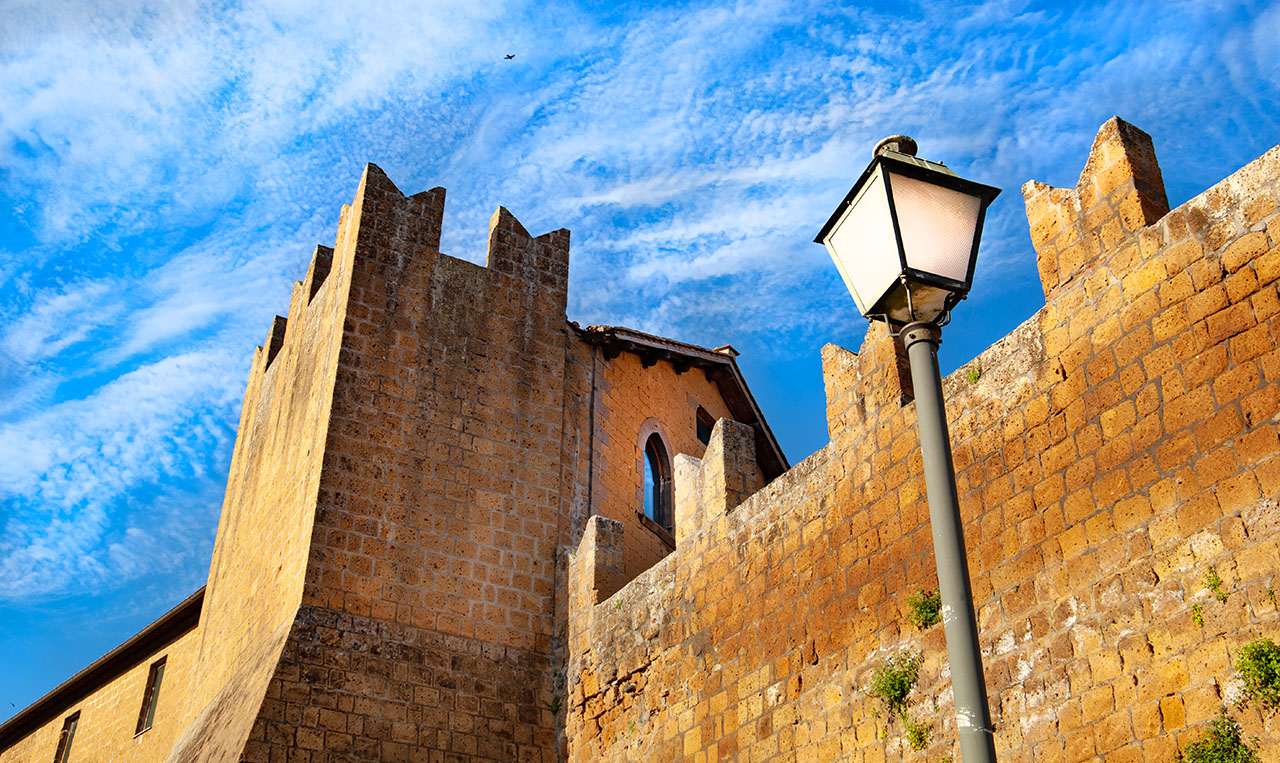
Struggles and Resilience: The Siege of Tuscania
In the 14th century, Tuscania became a subject of contention between the Holy See and the Di Vico prefects. Following a failed military campaign against Pope Boniface VIII, Tuscania reluctantly submitted to Rome in the early 14th century, marking its capitulation with a punitive and derogatory renaming as Toscanella. This pejorative name endured until 1911, when the town finally reclaimed its original name, Tuscania.
As Tuscania thrived, so did the challenges it faced. The expansionist ambitions of the Papal State cast a looming shadow over Tuscania. With its border perilously close to the city, Tuscania and its defensive structures became vulnerable to potential attacks. The walls, repeatedly destroyed and torn down, bear witness to the political struggles that unfolded within the city's borders.
In a dramatic turn of events, Cardinal Vitelleschi, acting on Pope Eugene IV’s orders, initiated a systematic demolition, aligning with the pope’s policy to eradicate symbols of Ghibelline aspiration. This tumultuous period witnessed further adversity when Charles VIII launched a formidable attack on Tuscania in 1495. The town's defensive structures bore the brunt of this assault, resulting in irreparable damage to access gates, guard towers, and significant sections of the curtain wall. These successive events left an enduring mark on Tuscania's landscape, echoing the struggles faced by the town throughout history.
Tuscania's New Defensive Walls Redefined the City Landscape
In Tuscania, a noteworthy peculiarity emerges as the formidable medieval walls encircle the city, two of its most significant churches are positioned well beyond these protective fortifications. This deviation from the conventional norm raises the intriguing question: what accounts for this distinctive placement?
Well, the gradual growth that characterized Tuscania throughout the Middle Ages faced a significant setback in the tumultuous 14th and 15th centuries. External conflicts, invasions, and the devastating impact of plagues, notably the Black Death, contributed to a sharp contraction, leading to a period of subsequent stagnation.
In the early 1400s, amidst the challenges posed by these historical upheavals, Tuscania underwent a deliberate reduction of its city walls. This reduction is attributed to the modernization of the defensive system, reflecting the city's adaptive response to the evolving circumstances during a time of both internal and external challenges.
This led to the exclusion of the Collegiate Church of Santa Maria Maggiore and the Basilica of San Pietro from the inhabited area, along with attached buildings, including the episcopal palace. Consequently, these significant churches are situated outside the city walls, a departure from the common practice of incorporating churches within the protective confines of a city's defensive walls.
Subsequent to this exclusion, the bishops left the episcopal palace near San Pietro and took up residence in a building beside the Church of Santa Maria della Rosa. This transition resulted in the elevation of Santa Maria della Rosa to Cathedral status, as numerous functions were transferred from the original Cathedral of San Pietro, even in the absence of an official relocation.
The present-day defensive walls, standing resolute and untouched, have remained frozen in time, eternally shaping the cityscape. These enduring structures serve as timeless monuments, bearing witness to profound local events that unfolded centuries ago.
Towering Guardians: Legacy of Tuscania’s Towers
From the towering forest on the hill of San Pietro and the watch towers of the city walls to the baronial mass commissioned by Angelo Tartaglia da Lavello, each tower whispers tales of battles waged, triumphs achieved, and the enduring spirit that defines Tuscania.
All along Tuscania’s defensive curtain walls, you will see a series of round and square watch towers - integral components of medieval defensive structures. Among these, Porta San Marco stands prominently as an impressive gate tower. Serving as one of the gateways into Tuscania's medieval center, it endures with steadfast defensive structures, embodying the resilience and effectiveness of the city's defensive systems.
Perched atop the Hill of San Pietro (Colle San Pietro), surrounding the Basilica of San Pietro and its adjacent episcopal palace, the Palazzo dei Canonici, defense towers were erected to guard this sacred space. In that era before its exclusion from the city’s new protective walls, the hill was a fortified fortress. Today, two of these towers still stand proudly, while a third, though severed, defiantly remains close to the basilica just beyond the enclosure.

As mentioned earlier, the strategic significance of the Colle San Pietro district dwindled, leading to its abandonment when the defensive walls were retracted, leaving the churches of San Pietro and Santa Maria Maggiore outside their protective reach. This historical episode still echoes today, with the Basilica of San Pietro standing in splendid isolation on the hill, a poignant reminder of times long past.
Torre di Lavello: A Mercenary's Legacy in Tuscania
In the heart of Tuscania's historic center, the Torre di Lavello stands as a majestic sentinel, commanding attention at the entrance of the picturesque park that takes its name. The tower draws its name from Angelo Broglio da Lavello, also known as Tartaglia, a Mercenary Captain and the natural son of the Prince of Taranto and Lord of Lavello.
In a cruel turn of events, Tartaglia was beheaded by papal will, and in a symbolic response, Tuscania, too, "beheaded" his tower, reducing it in stature.

Tuscania's medieval walls and towers weave tales of battles, triumphs, and indomitable spirit. Each architectural feature contributes to the captivating narrative of a city that withstood the tests of time. Tuscania’s formidable medieval walls served as both physical barriers and symbols of resilience, enduring sieges and political strife. They underwent transformations, adapting to the city's changing fortunes. The strategically designed merlons, crafted for defense and counterattacks, bear witness to medieval political struggles.
The towers, from San Pietro to Torre di Lavello, narrate unique sagas, frozen in tufa blocks that grace the city's skyline, remaining almost unchanged for centuries. The Basilica of San Pietro, surrounded by timeless guardian towers, stands isolated yet resilient, reflecting the city's indomitable spirit. Together, these structures are a testament to Tuscania's enduring legacy etched in stone, timeless guardians of Tuscania’s landscape.
READ MORE from RomeCabs:
- 5 Best Things to See and Do in Tuscania
- Tarquinia and Tuscania - Journey into a Civilization Shrouded in Mystery
- Bracciano Castle and Village of Ceri - Where Medieval History and Legends Come to Life
Thank you for reading our travel blog: Silent Sentinels: The Timeless Guardians of Tuscania's Landscape and for choosing RomeCabs for your private tours in Italy. Immerse yourself in the wonders of Tuscania by booking our Medieval Magic Countryside Tour or Mysterious Etruscans Tour from Rome or shore excursion from Civitavecchia. We look forward to showing you beautiful places in Italy!
Also Find RomeCabs online at:
- RomeCabs Facebook: https://www.facebook.com/RomeCabsToursAndTransfers
- RomeCabs Pinterest: https://www.pinterest.it/romecabs
- RomeCabs Twitter: https://twitter.com/RomeCabs
- RomeCabs Instagram: https://www.instagram.com/romecabs/
- RomeCabs Flickr Photos: https://www.flickr.com/photos/romecabs/
- RomeCabs Recommended on Cruise Critic
- Read more Travel Blogs from Romecabs: https://rome-cabs.org/
